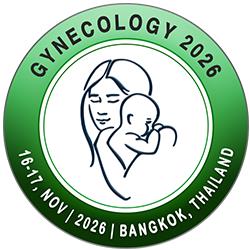Track: Preterm Birth and Prevention

Advances in Understanding Preterm Birth
Pathophysiology: Biological mechanisms of preterm labor, including infections, inflammation, and placental dysfunction.
Predictive Tools: Use of biomarkers, imaging, and AI-driven models for assessing preterm birth risk.
Disparities: Addressing socioeconomic, racial, and geographic inequities in preterm birth rates.
Innovations in Prevention Strategies
Pharmacological Interventions: Progesterone therapy, tocolytics, and emerging drugs targeting inflammatory pathways.
Cervical Cerclage and Pessaries: Latest advancements and guidelines for high-risk pregnancies.
Lifestyle Changes: Impact of nutrition, smoking cessation, and stress management in reducing risks.
Enhancing Neonatal Outcomes
Antenatal Corticosteroids: Optimizing timing and dosing for neonatal lung development.
Neonatal Care Innovations: Advanced NICU technology and strategies to manage complications like RDS and NEC.
Family-Centered Care: Supporting parental involvement and emotional well-being in NICU settings.
Global and Public Health Perspectives
Reducing Preterm Birth: Universal prenatal care and successful prevention models in low-resource settings.
Community-Based Interventions: Role of telemedicine and public health partnerships in supporting high-risk pregnancies.
Future Directions in Research and Collaboration
Emerging Research: Novel therapies, genetics, and interdisciplinary collaboration for preterm birth prevention.
Technological Innovations: Wearable devices, point-of-care diagnostics, and personalized strategies using big data.
Join the mission to combat preterm birth. Submit your abstract today and share your research, ideas, and solutions to improve prevention and outcomes. Together, let’s shape a healthier future for mothers and their babies.
Scientific Highlights
- Gynecology and Obstetrics
- Paediatric and Adolescent Gynecology
- Menstrual cycle and Ovulation
- Reproductive Endocrinology and Infertility
- Contraception and Family Planning
- Gynecologic Oncology
- Gynecology Pathology and Aesthetics Gynecology
- Urogynecology and Pelvic Floor Disorders
- Midwifery and Obstetrical Nursing
- Maternal Fetal Medicine Innovations
- Advancements in Prenatal Diagnostics
- Preterm Birth and Prevention
- Spontaneous Abortion and Miscarriage
- Sexually Transmitted Diseases
- Minimally Invasive Gynecologic Surgery
- Gynecological Disorders
- Menopause and Hormone Replacement Therapy
- Global Women’s Health Initiatives
- Ethical and Legal Issues in Obstetrics and Gynecology
- Innovations and Future Directions in Gynecology and Obstetrics


